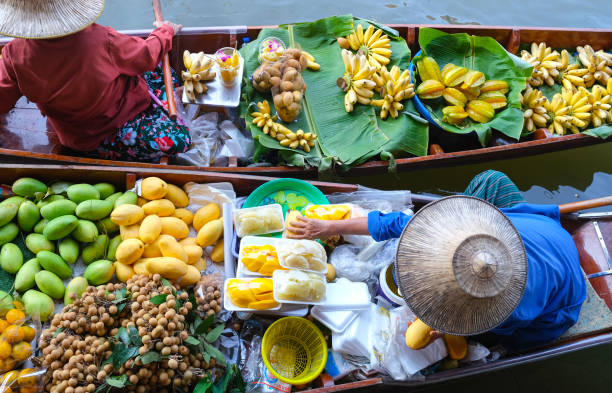
A Taste of Asia
Share
Asia is a continent renowned for its diverse culinary traditions, each rooted in rich history and culture. Among the most celebrated cuisines are those of Japan, Thailand, China, Vietnam, South Korea, and Singapore. These countries offer a unique array of flavors, ingredients, and cooking techniques that have captivated food enthusiasts worldwide.
Japan: Precision and Elegance
Japanese cuisine, or washoku, is celebrated for its delicate balance of flavors and aesthetics. Staples like sushi, sashimi, and tempura showcase fresh, seasonal ingredients. Umami, the fifth taste, plays a crucial role in dishes like miso soup and soy sauce-based recipes. Beyond food, rituals such as the tea ceremony highlight the cultural emphasis on mindfulness and harmony.
Thailand: A Symphony of Flavors
Thai cuisine is a vibrant interplay of sweet, sour, salty, and spicy flavors. Iconic dishes like Tom Yum Goong (spicy shrimp soup) and Pad Thai (stir-fried noodles) reflect this balance. Fresh herbs like lemongrass, galangal, and Thai basil enhance the dishes, while coconut milk adds richness. Street food culture thrives here, with markets offering delicacies like mango sticky rice and grilled satay skewers.
China: The Culinary Giant
China's vast geography and history have birthed an astonishingly diverse cuisine. From the fiery Sichuan hot pot to the delicate dim sum of Cantonese cooking, Chinese food celebrates regional variety. Staples like rice, noodles, and tofu are complemented by soy-based sauces, fermented ingredients, and bold spices. The philosophy of yin and yang influences meal preparation, promoting balance and harmony.
Vietnam: Freshness at the Forefront
Vietnamese cuisine is characterized by its emphasis on fresh ingredients and minimal cooking. Signature dishes like Pho (noodle soup) and Banh Mi (baguette sandwiches) combine herbs like cilantro and mint with zesty lime and fish sauce. Rice plays a central role, from steamed grains to the crispy textures of Banh Xeo (savory pancakes). Meals are light yet packed with flavor, reflecting Vietnam’s tropical landscape.
South Korea: A Tradition of Fermentation
South Korean food is steeped in tradition, with fermentation taking center stage. Kimchi, a fermented vegetable dish, accompanies most meals, embodying bold and tangy flavors. Bibimbap (mixed rice with vegetables) and Korean barbecue showcase the interactive nature of dining, often involving communal cooking. The influence of hansik, or traditional Korean food, emphasizes healthful and harmonious eating.
Singapore: A Melting Pot of Flavors
As a cultural crossroads, Singapore’s cuisine is a fusion of Malay, Chinese, Indian, and Peranakan influences. Signature dishes like Hainanese Chicken Rice, Laksa (spicy noodle soup), and Chilli Crab are a testament to its multicultural roots. Hawker centers are the heart of Singaporean dining, offering an affordable yet unparalleled culinary experience that celebrates its diverse heritage.
The cuisines of Japan, Thailand, China, Vietnam, South Korea, and Singapore each tell a story of their people, geography, and history. From Japan’s meticulous artistry to Singapore’s multicultural flair, these traditions transcend borders, uniting food lovers worldwide in a celebration of Asia’s gastronomic excellence.
Get more knowledge about eating healthy, please refer to Flavors and Footprints.
